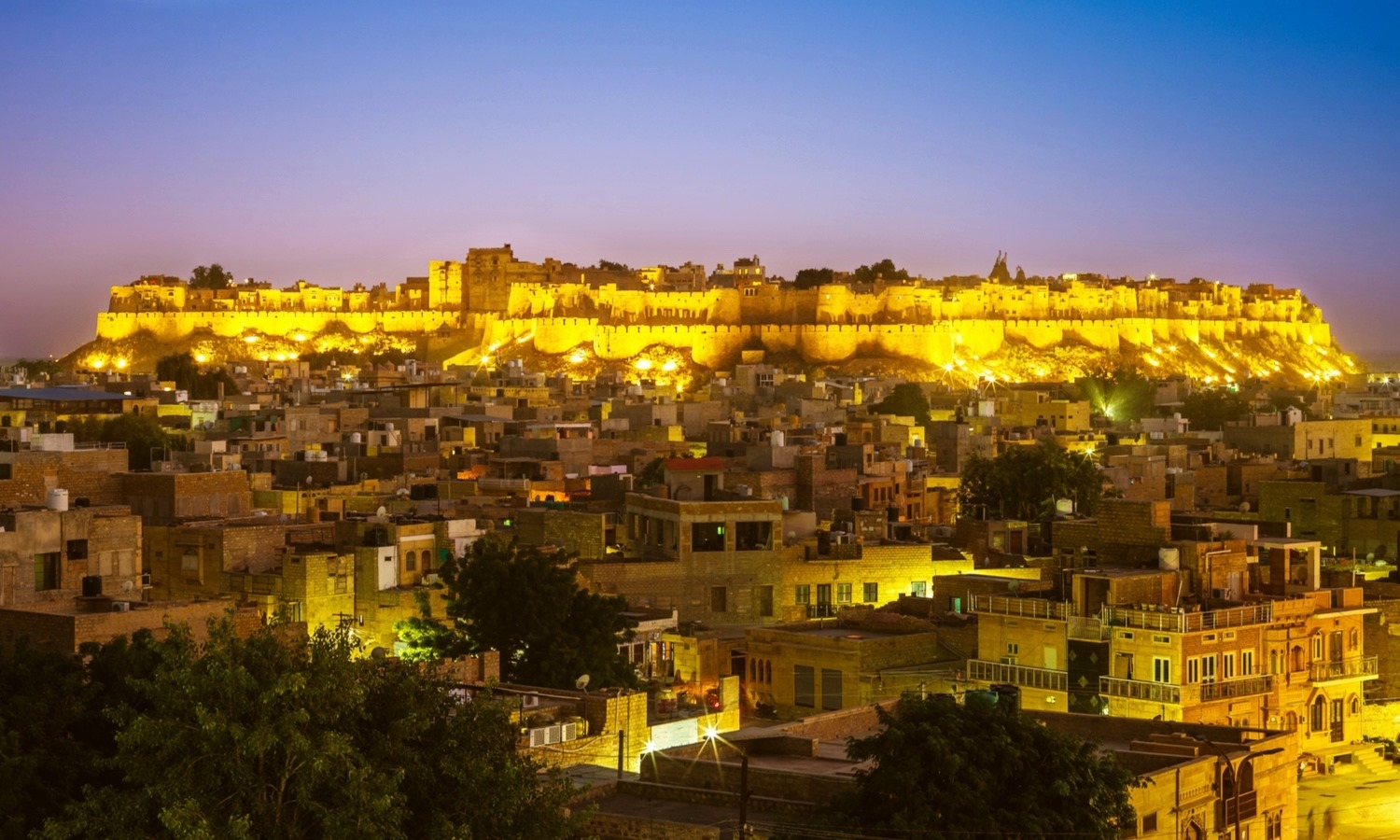Jaisalmer, or the ‘Golden City’, is almost 1000 years old, ensconced by the Thar Desert, just 575 km west of Jaipur. Extremely hot during the summer, Jaisalmer is best visited in the months of December-January and is a shimmering gem in the crown of Rajasthan tourism. Named after the founder of the city, Rawal Jaisal, it holds within its folds numerous magnificent sandstone marvels, of which Jaisalmer Fort, perched on a limestone hillock called Meru, is undoubtedly the most incredible of all, and inspired the legendary film maker Satyajit Ray to write and direct Sonar Kella (Golden Fortress), a detective crime thriller. About 25 per cent of Jaisalmer’s population lives within the fort walls, lending it an almost romantic aura of uninterrupted time down the ages.
Jaisalmer’s Jain community is integral to its ethos, and is thus replete with grand Jain temples, of which its 12-15th century temples...
Jaisalmer, or the ‘Golden City’, is almost 1000 years old, ensconced by the Thar Desert, just 575 km west of Jaipur. Extremely hot during the summer, Jaisalmer is best visited in the months of December-January and is a shimmering gem in the crown of Rajasthan tourism. Named after the founder of the city, Rawal Jaisal, it holds within its folds numerous magnificent sandstone marvels, of which Jaisalmer Fort, perched on a limestone hillock called Meru, is undoubtedly the most incredible of all, and inspired the legendary film maker Satyajit Ray to write and direct Sonar Kella (Golden Fortress), a detective crime thriller. About 25 per cent of Jaisalmer’s population lives within the fort walls, lending it an almost romantic aura of uninterrupted time down the ages.
Jaisalmer’s Jain community is integral to its ethos, and is thus replete with grand Jain temples, of which its 12-15th century temples dedicated to Jain Tirthankaras, which are located within the fort’s precincts - Paraswanath, Chandraprabhu, Shantinath, Rishabhdev, Kunthunath and Shitalnath temples - are awe-inspiring in their splendour. It comes as no surprise therefore, that Jaisalmer is a veritable pilgrimage city for the Jains. The ornate sandstone structures are impressive examples of fine Jain architecture, with their emphasis on intricate carvings and engravings.
While snaking through the narrow by lanes of the city, you come upon the ostentatious Patwon ji ki Haveli, the city’s largest sandstone mansion built in the 19th century, which is actually a cluster of five havelis with imposing arches, jharokhas (windows) and walls inlaid with mirror work, once belonging to a family of wealthy brocade merchants.
Vibrant and elaborate pagdis (mens’ headgear) and swirling ghaghra –odhni (women’s skirt and head scarf) create a colourful riot against the sand- brown of the landscape. With abundant and fascinating folk traditions of haunting music and dance showcased by Kalbeliya dancers, Langa and Manganiyar musicians, camel and cattle fairs, local handicrafts like beautiful camel skin juttis (footwear) and handbags with detailed embossed and embroidered motifs, stunning silver jewellery, bead and mirror work embroidery, dyed and block-printed ajrakh textiles, hand-painted papier mache boxes and furniture items, and exhilarating sand-bashing desert safaris, Jaisalmer offers you all this and more, making it one of the most incredible destinations of India!
Read Less



